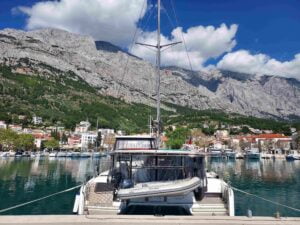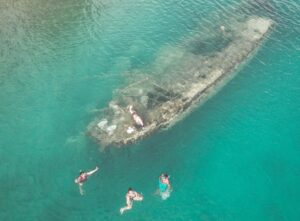After we sailed the Ria’s (the fjords) of Northwest Spain and sailed further south, we soon would be leaving Spanning and crossing the border to Portugal. So we got ready for Portugal, changed to the yellow/red flag we used to for the last 2 months in Spain for the green/red Portuguese flag and sailed into Portugal. It’s that simple when you are crossing borders on water (and thank you Schengen Agreement of course). The first harbor in Portugal we visited was Viana do Castelo and immediately, the change in culture, buildings and people was noticeable for us!
5 ways how Portugal is different from Spain
- The language of course: the Portuguese language is one of a kind, you can’t compare it to Spanish. Sometimes words remind of the Spanish language, but much is different. For instance hello is no longer ‘olá’ but is ‘bom dia’. ‘Thank you is not ‘gracias’ anymore, but ‘obrigada’. It’s really hard to understand the Portuguese language, but it sounds wonderful, melodious almost
- Goodbye tapas and welcome Pastel de nata! From savory tapas to many, many sweet pastries here in Portugal
- The tiling on the houses, azulejos, used as ornamental decoration on houses and churches really stands out. Often in blue and white, but also in many other colors like green, red and yellow. The images displayed are often of boats at sea, but also religion or everyday life scenes
- Also in the street scene, you see a lot of balconies in cast iron in stead of white painted concrete we saw in Spain
- Portuguese are more modest in their behavior, less loud in their talking and less extravert in their gestures compared to many Spanish women and men we have met
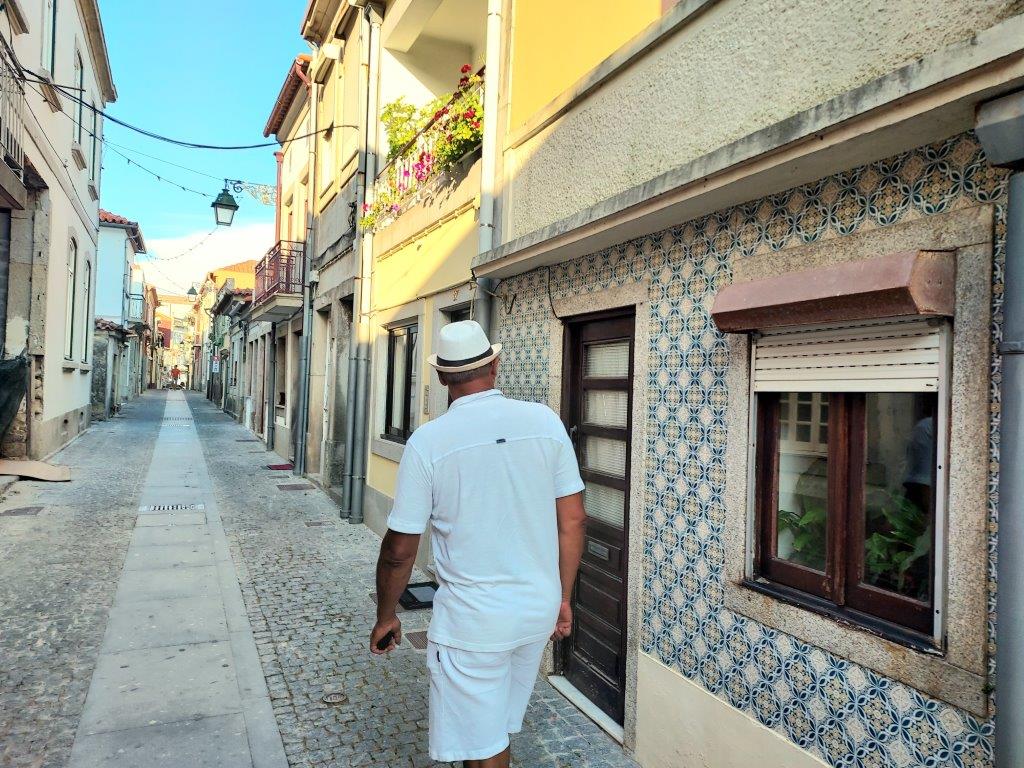


Visiting Viana do Castelo
The first Portuguese city we explored turned out to be very charming. We stayed here a few days and walked the streets, did grocery shopping and had good contact with the friendly harbor masters. Interesting to see that many visitors who walk the south route to Santiago de Compostela, pass this city and actually the harbor where we were, so we saw a lot of pilgrims walking by in their sporty outfit. Young and old, men and women and of all nationalities (Asian, European, American). We ate at a Portuguese restaurant that also had a warm heart for the pilgrims:
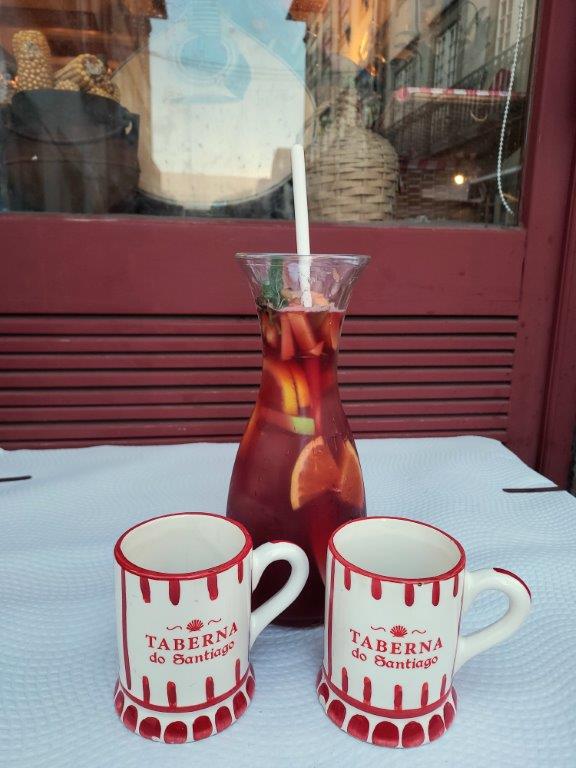
The Basilica de Santa Luzia
With our e-bikes we drove up the ‘Monte de Santa Luzia’ located in the north of Viana do Castelo. At the top of the mountain is Basilica de Santa Luzia situated. The building of this basilica, which looks a bit like Sacre Coeur in Paris, started in 1904 and lasted until 1959. You also can reach the top of the Monte de Santa Luzia by funicular (elevator) which was closed that day, by car or by climbing the steps.
It took us about half an hour to get to the top and it was worth it. Beautiful views on the Lima river valley, as well as a large stretch of the seashore to the north and at south of the estuary, you could see the green mountain range. There were some low hanging clouds which made the scenery a bit mysterious. And since this panorama has been rated by the National Geographic Magazine as the third most beautiful in the World, we took our drone and made this video:
The great Portuguese explorers
A friend of mine saw on Marine traffic, where you can follow our live location with the boat, that we were crossing the border from Spain to Portugal. He sent me an enthusiastic WhatsApp message: ‘Yes, you are now in the land of the great sea explorers, like you do yourself now with your world trip by boat!’. The great Portuguese explorers. That triggered me. I had heard of Vasco Da Gama of course, but I decided that evening to read more about the brave Portuguese sea explorers in the 15th century. It was so interesting! The Portuguese used to sail to Africa a lot in that time, because they were denied to sail the Mediterranean which was the terrain of the Spanish, Italians and Greeks traders. So they wanted to find the way to India and America to drive trade, especially because of the rich spices there. They discovered Brasil that way and they had rounded Cape of Good Hope earlier, so they knew India could be reached by water via the Indian Ocean. The Portuguese engineered boats that could sail at open sea, their navigation was more progressive than other European countries, because they had to sail much further from the coast. And while the British and French focused on making war with each other during the 15th and 16th century, in Portugal there was peace and wealth because of all the trade the Portuguese sailors made abroad. That also explains the many buildings with ceramic tiles and cast iron balconies which are more expensive than concrete.
Visiting hospital ship Gil Eanes
The second biggest ‘attraction’ in Viana do Castelo is hospital ship ‘Gil Eanes’ (1953) which was situated right next to our boat in the harbor. So obviously that drew our attention. And it has a remarkable story! When the Portuguese found their way to Newfoundland (Canada), they started fishing for codfish (Bacalhau), because they needed these nutritious fish to feed their many seamen and use the fish for their catholic rituals also. Bacalhau is so much loved in Portugal, it is called a loyal friend (‘fiel amigo’) and there are 365 recipes for bacalhau! But fishing in Newfoundland was hard work: 5 months the fishermen spend there, fishing every day in the cold at their 5 meter boats. Filling up their boats with fish that they catch with lines in their hands. Then salting the fish on board of about 40 bigger ships with storage areas that came along on this fishing mission. Hospital ship ‘Gil Eanes’ went with this fleet to help sick crew and ill fishermen during the 5 months. We walked on this ship of 70 years old to see the hospital beds, operationroom and even a pharmacy and X-ray room was aboard in that time!
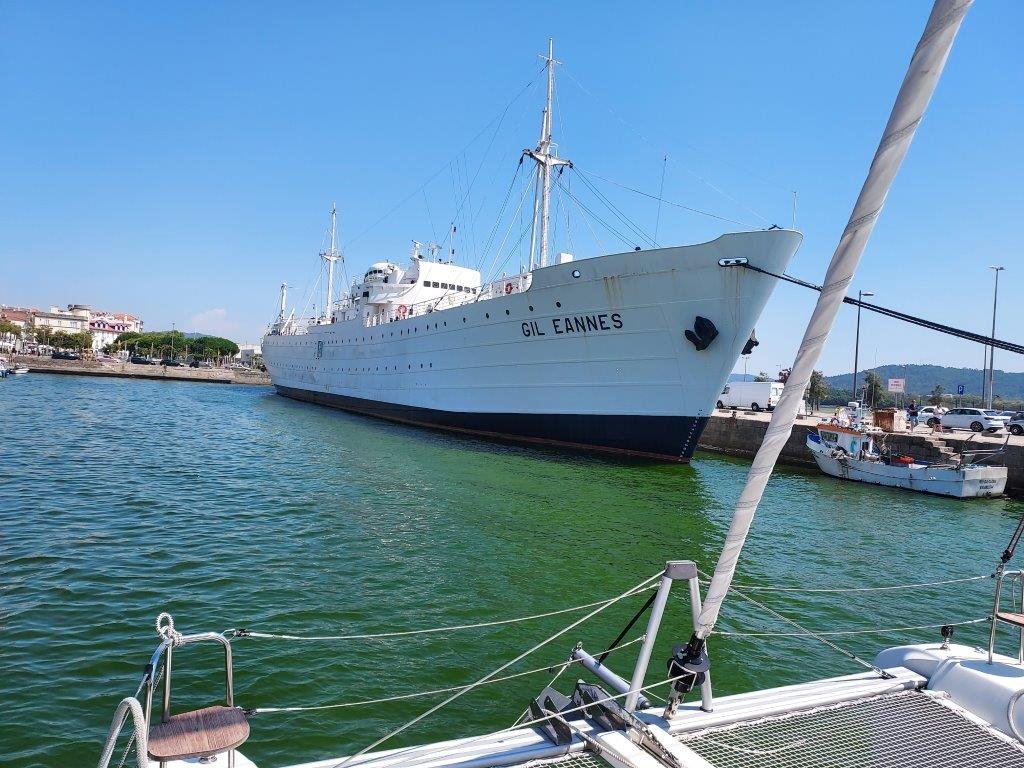


So when we left Viana do Castelo, we were quite impressed by the Portuguese and their history already. And we just started to explore Portugal! Next would be the vibrant city of Porto.

